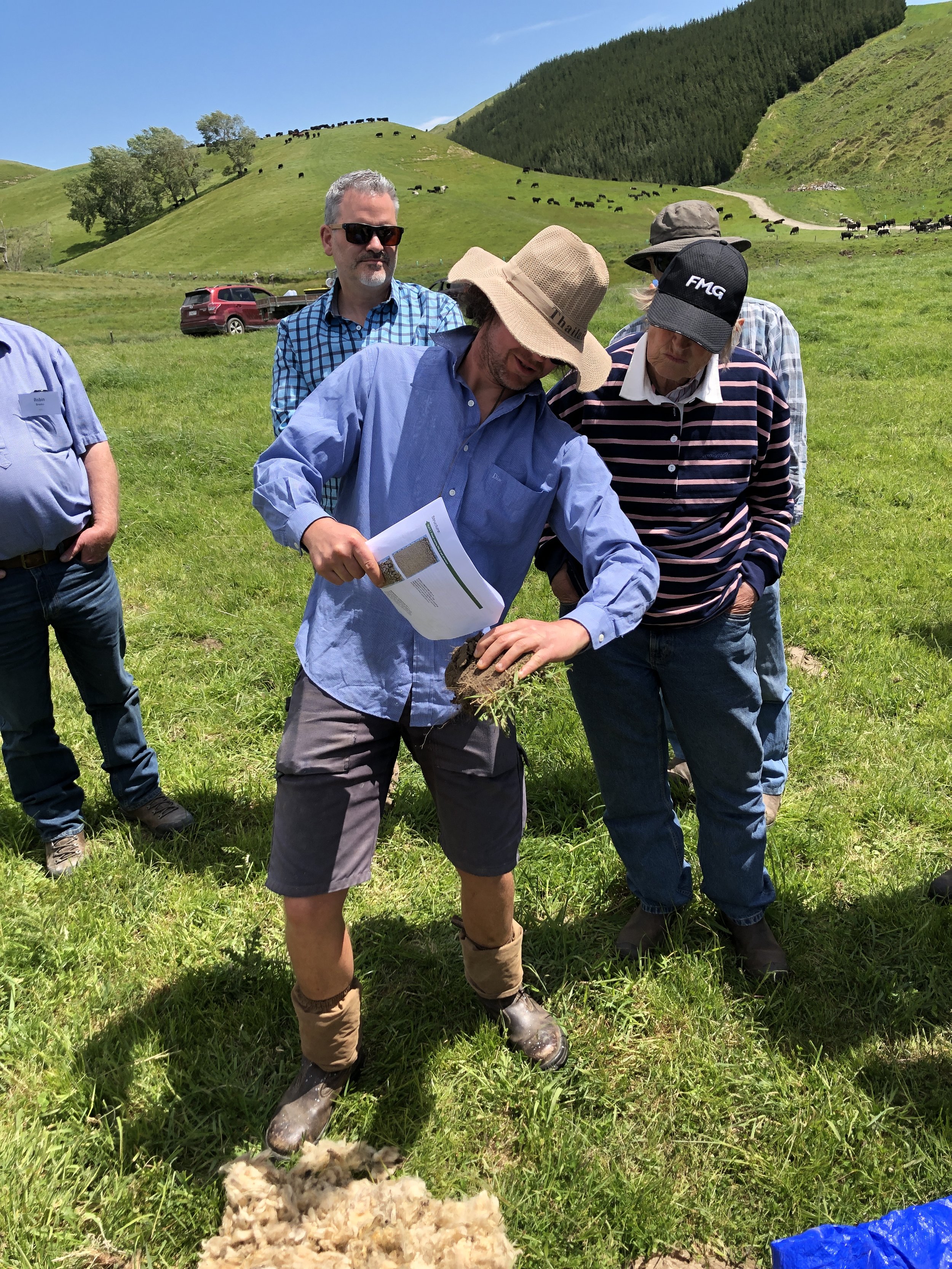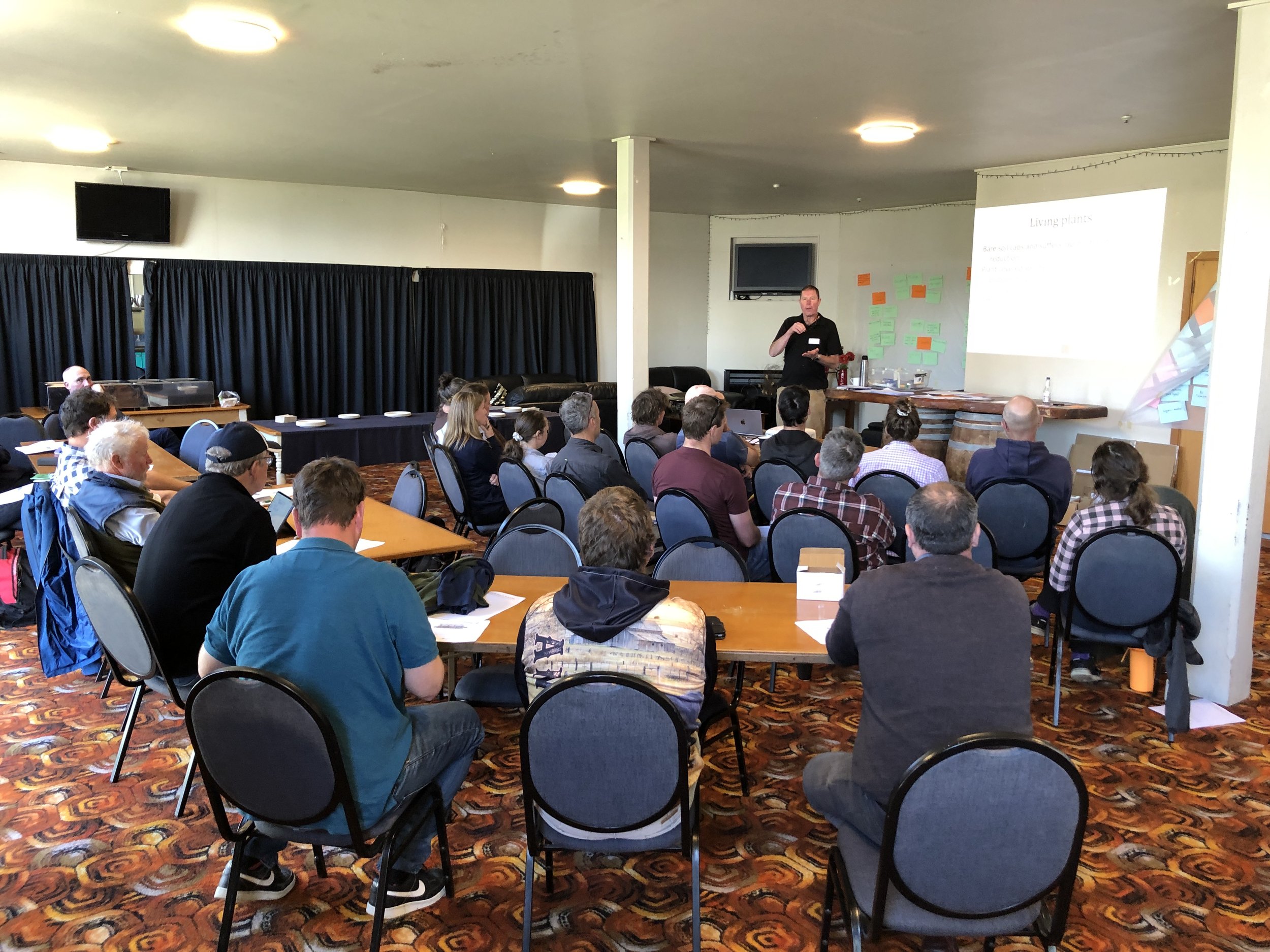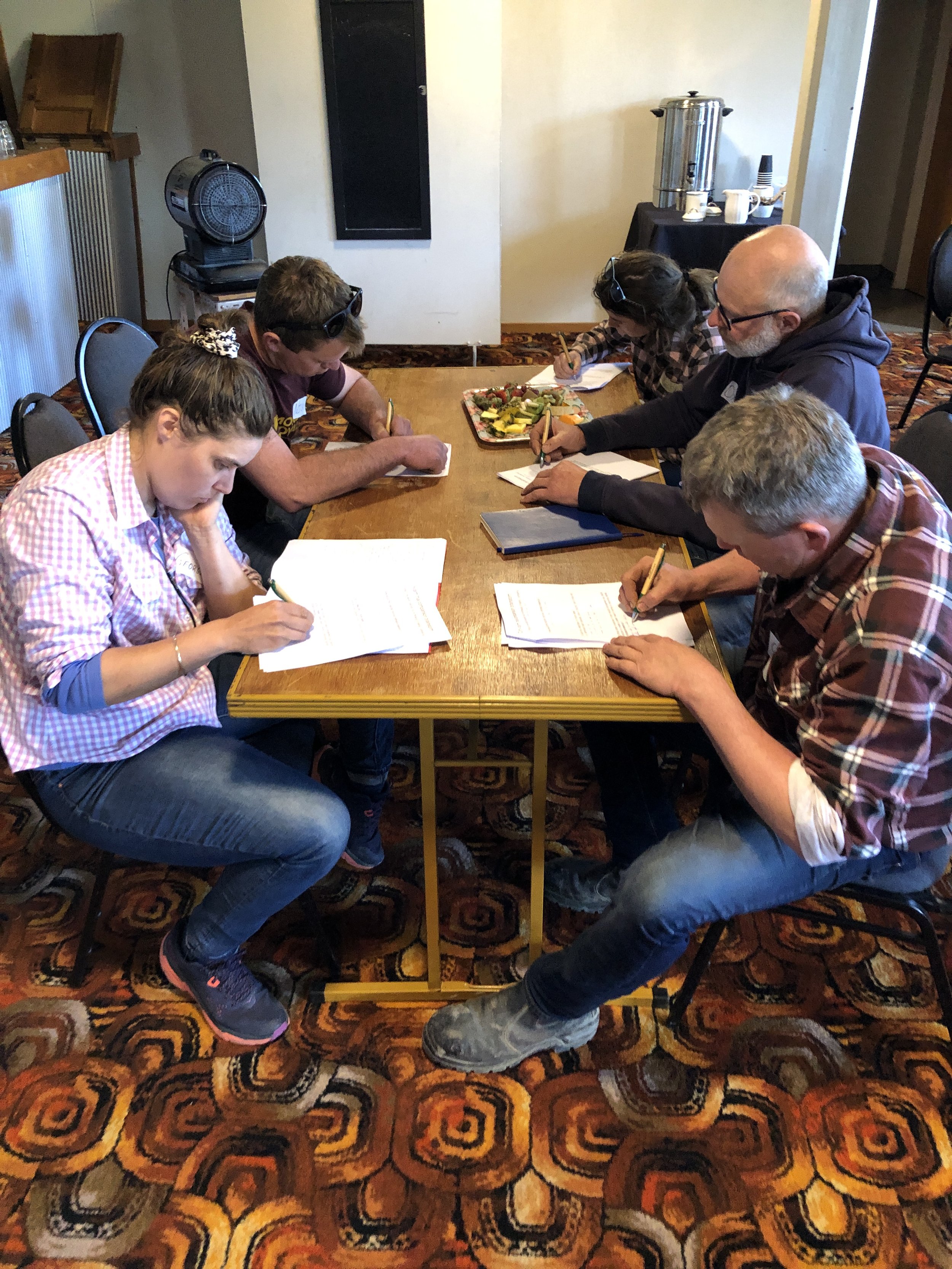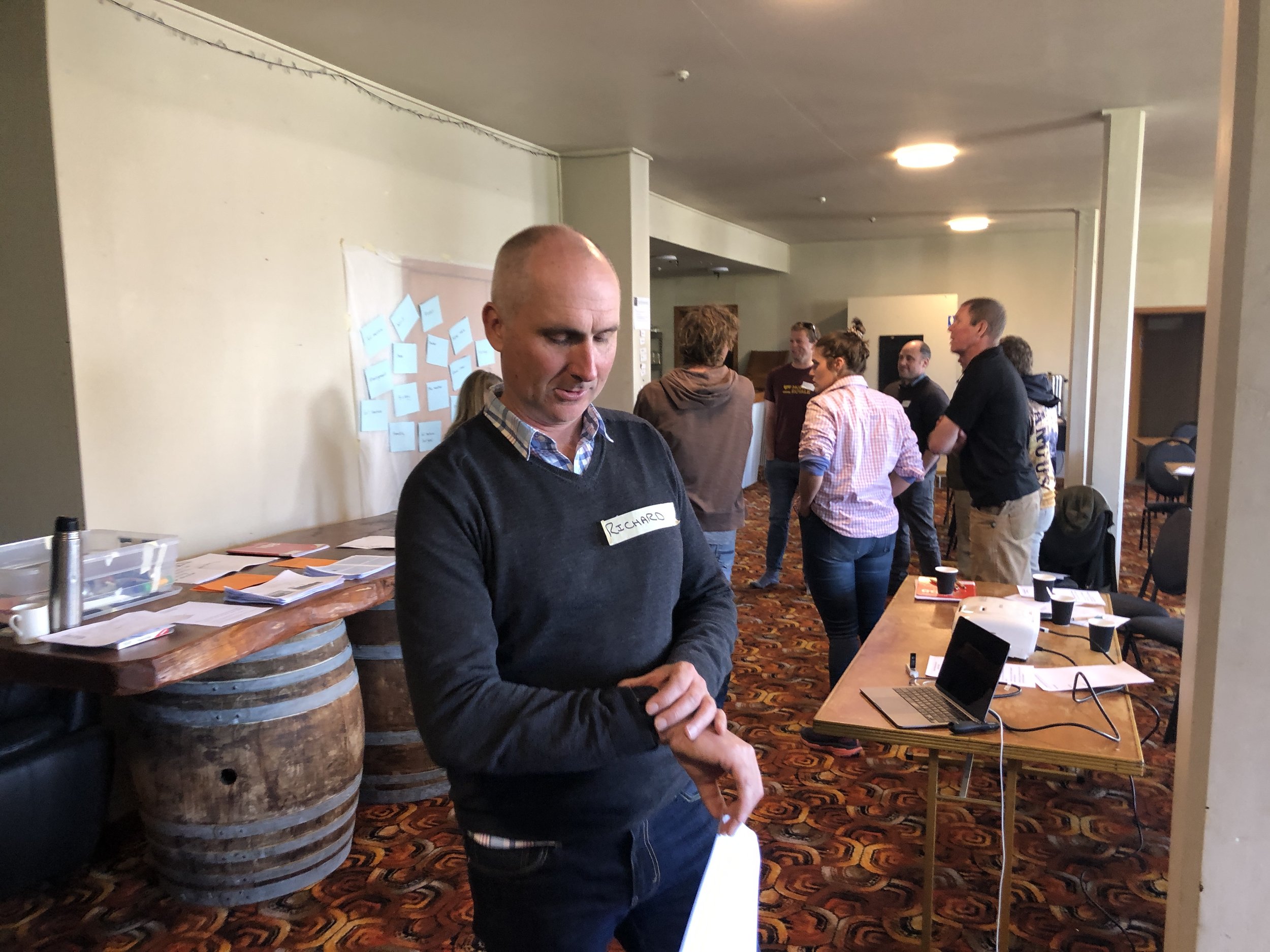Catch the Rain - Farmer Information
This page hosts all the key information for Catch the Rain farmers and will be regularly updated as the project progresses.
Current work-in-progress:
Finish remaining On-Farm Trial Plans
Host webinar series and open Zoom calls for Group C farmers (and anyone interested)
Finish baseline measurements (visits from Merf where possible)
Pursue options (including funding) for soil moisture meters, soil testing, student projects and further extension opportunities.
Upcoming events:
13 March 2024: Regenerative Grazing Management webinar
27 March 2024: Identifying your limiting factors webinar
17 April 2024: Deferred grazing webinar
8 May 2024: Diverse Forage Crops webinar
29 May 2024: Diverse Pastures webinar
19 June 2024: Biological fertilisers and stimulants webinar
Past events:
Oct 2023: Four initial workshops in Southland, Canterbury and Lower North Island
Nov 2023: Field workshops in North and South Canterbury, Wairarapa
Dec 2023: Webinar with Soil Mentor (see below)
Monitoring Guides:
Farmer Resources:
Presentation: ‘What affects my infiltration’ presentation slides (pdf)
Presentation: ‘Designing on-farm trials’ presentation slides (pdf)
Knowledge: The Quorum Sense ‘Toolbox’
A hub of information and farmer examples on soil health, diverse pastures and crops, biological inputs, grazing management etcKnowledge: Quorum Sense Case Studies
A source of ideas and inspiration!Webinar: Monitoring farm health with Soil Mentor (click link or play below)
FAQs
-
Merf and Sam are working with each farmer to develop trials/comparisons and turn this into a completed On-Farm Trial Plan.
Below are some of the ideas that have been proposed by farmers during or since the initial workshops. We encourage you to run with trials developed by other farmers if relevant as this creates opportunities to share learning as well as results.
Grazing Management
Impact of longer pasture recoveries on root depth and density
Methodology: Set up 2-4 ‘pasture cages’ using IBC crates or similar to exclude livestock from grazing within the cage. Remove the cage to allow grazing every other rotation, effectively doubling pasture recovery time within the cages. In addition to baseline measurements, use Soil Mentor to record pre-grazing DM, pre-grazing Ground Cover, post-grazing DM (residuals) and post grazing ground cover each time animals enter and leave your paddock. Make any General Observations of pasture quality.
Impact of leaving longer residuals on ground cover, infiltration/runoff rates and soil moisture
Methodology: Select two paddocks as similar as possible (or divide one paddock in half) and aim to graze one paddock to ~1500kgDM residual and the other to a higher residual. Maintain this for the duration of the trial. Establish sampling transects in each paddock that are as similar as possible. In addition to baseline measurements, use Soil Mentor to record pre-grazing DM, pre-grazing Ground Cover, post-grazing DM (residuals) and post grazing ground cover each time animals enter and leave your paddock. Make any General Observations of pasture quality.
Impact of different grazing management in the high country on ground cover, infiltration/runoff rates, soil moisture and pasture quality
Methodology: Select two paddocks as similar as possible (or divide one paddock in half) and graze one paddock normally (your control) and one differently (your treatment). Maintain this for the duration of the trial. Establish sampling transects in each paddock that are as similar as possible. In addition to baseline measurements, use Soil Mentor to record pre-grazing DM, pre-grazing Ground Cover, post-grazing DM (residuals) and post grazing ground cover each time animals enter and leave your paddock. Make any General Observations of pasture quality.
Plant Species
Comparing performance of conventional pasture versus diverse pasture
Methodology: Identify a sampling transect within an existing or newly established diverse pasture, and within a conventional pasture, identifying transects that are as similar as possible (ideally adjacent to each other with pastures established at the same time). Use Soil Mentor to monitor the performance of each for the duration of the trial.
Comparing the performance of different plant species mixtures
Methodology: Establish new plant species mixtures if needed. Identify sampling transects within each plant species mixture that you want to compare, identifying transects that are as similar as possible (ideally adjacent to each other with pastures established at the same time). Use Soil Mentor to monitor the performance of each for the duration of the trial.
Inputs
Impact of different inputs (i.e. biofertilisers, biostimulants, lime etc) on soil health, infiltration/runoff and pasture performance
Methodology: Decide whether you want to have different treatments within or between paddocks. For trials within a paddock, identify ‘strips’ within your paddock that are as similar as possible - mark your treatment(s) and control areas. Consider whether livestock behaviour (grazing behaviour, fertility transfer etc) could influence your results, and if so, subdivide your treatment(s) separate to your control. For trials between paddocks, ensure the paddocks (and sampling transects) are as similar as possible and ideally adjacent to each other.
Mechanical
Impact of mechanical aeration on soil health, infiltration/runoff and pasture performance
Methodology: Decide whether you want to have different treatments within or between paddocks. For trials within a paddock, identify ‘strips’ within your paddock that are as similar as possible - mark your treatment(s) and control areas. Consider replicating this design on multiple paddocks. For trials between paddocks, ensure the paddocks (and sampling transects) are as similar as possible and ideally adjacent to each other.
Whole Farm
Comparing the performance of different parts of the farm (similar management system)
Methodology: Identify the various land management units (LMUs) that you want to compare. Select representative sampling transects within each LMU, avoiding stock camps. Establish baseline monitoring and identify any measures that you want to monitor more frequently (i.e. Ground Cover). Decide on your frequency of monitoring and maintain for the duration of the trial.
Comparing the performance of different farm systems (different management systems and/or different farms)
Methodology: Identify representative parts of each farm system and identify sampling transects that are as similar as possible in terms of soil type, slope and aspect. Establish baseline monitoring and identify any measures that you want to monitor more frequently (i.e. Ground Cover). Decide on your frequency of monitoring and maintain for the duration of the trial.
Other
Comparing the performance of different winter crop species mixtures
Methodology: Identify crop species to compare (i.e. low vs high diversity). Establish different crop species mixtures using the same establishment methods, at similar times, on similar/identical soil types/slopes/aspects. Identify sampling transects within each plant species mixture that you want to compare, identifying transects that are as similar as possible (ideally adjacent to each other with pastures established at the same time). Undertake baseline monitoring in late autumn, prior to grazing. Return in early spring and monitor again before paddocks are sown into the next crop/pasture.
-
On-Farm Trial Plans are the formal description of your trial/comparison. They are a tool to help ensure that your trial/comparison is well planned. They are also a record of your goals for the trial and ensure that everyone involved in the trial is on the same page.
Merf or Sam will help you complete your On-Farm Trial Plan. Ideally this will happen before baseline monitoring but some farmers may establish their transects before deciding on their trial. -
As best as possible, try to match;Soil type
Pasture species - unless this is what you are comparing
Stock camps
Slope
Aspect
Management history (fertiliser, chemicals, cultivation, time since pasture establishment etc) - unless this is what you are comparing
More sampling transects = more confidence!
Having confidence in your trial/comparison results boils down to three key things:
How well you implement your trial
How many sampling points you have
Weather (which can influence things like pugging and determine whether your soils dry enough to observe drought stress)
Therefore replication is the key to increasing confidence in your results. You can replicate your treatments to mitigate the chances that you accidentally mismanage something (point 1). And you can replicate and run multiple sampling transects per treatment to reduce the risk that things like paddock variation are influencing your results. You can also team up with other farmers and run similar trials to each other which effectively creates a ‘replicate’ although this won’t be as relevant as replicates within your own farm.
Essentially you need to find your balance between; designing something that is simple, easy to implement and not so time consuming that you don’t do the monitoring; and what is going to give you confidence in the results.
-
While we (Merf) are hoping to physically visit as many farmers as possible to help establish sampling transects and baseline measurements, we won’t be able to do this for everyone.
Regardless, before you get started you will need the following things:
A completed On-Farm Trial Plan (contact Merf or Sam about this)
A Soil Mentor account with your Fields and Sample Sites set up (contact Merf or Sam about this)
If you want to install runoff catchers, you will need to supply a 200L drum and some 20mm alkathene pipe per catcher. The cost for each runoff catcher will be approximately $100 each (cost of materials only) plus $20 for a 250mm capacity Nylex rain gauge to install at the site.















